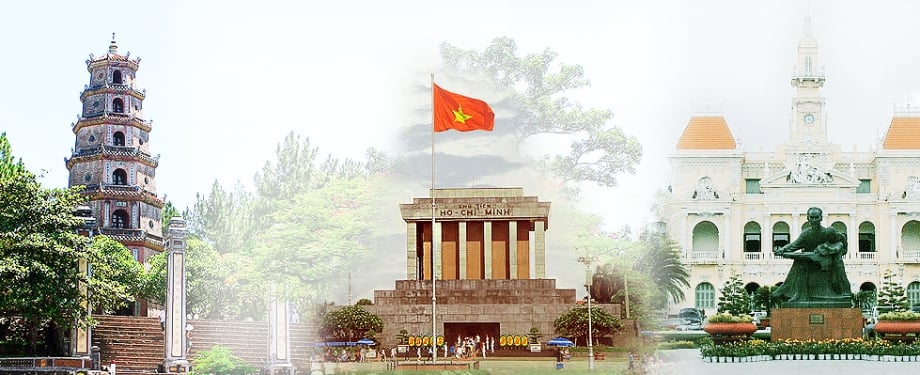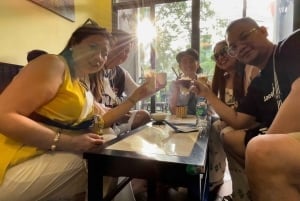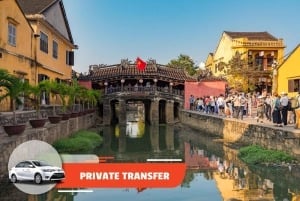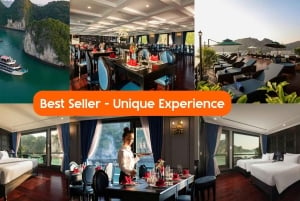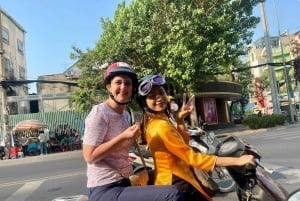The Do's…and the Don'ts of Visiting Vietnam
Book Top Experiences and Tours in Vietnam:
If youʻre booking your trip to Vietnam last minute, we have you covered. Below are some of the top tours and experiences!- Hoi An/Da Nang: Hue City Group Tour with Lunch and Footbath
- From Hanoi: Old Quarter Vegetarian Food Tour
- From Hanoi: 2-Day & 1 Night Halong Bay Tour
- From Ho Chi Minh City: Mekong Delta Small-Group Tour
- Phu Quoc: 3 Island Tour by Boat with Guide
Planning a trip to Vietnam? As with any foreign country, there are some customs, traditions, and general quirks that are definitely going to differ from those in your home country. Our list below will help you grasp some of the most important âdoâs and dontâsâ of traveling through Vietnam, which will help you not only be a good visitor, but also a good representative of your home country. Why is this so important?
Itâs not uncommon when you meet a local Vietnamese, to have them ask you where youâre from before they ask your name. So bear in mind that even though you may be traveling far from home, youâre still representing it!
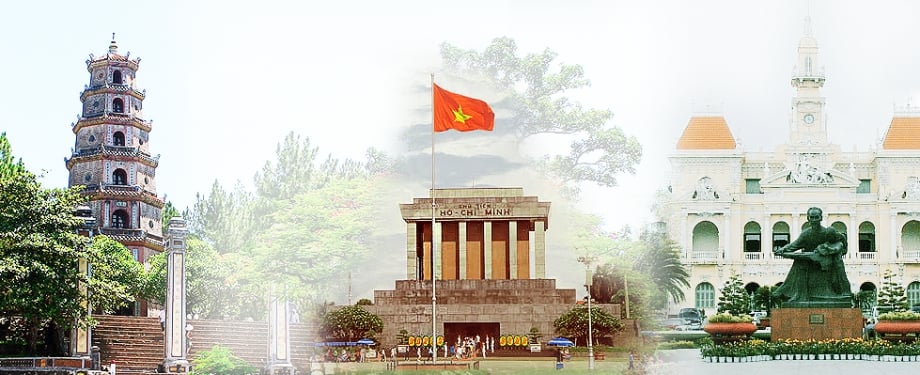
The Doâs:
Do learn a bit of history before visiting
Vietnam is rising beautifully out of a long, tumultuous history. Though war and famine are decades in the past, traces of conflict are still visible throughout the country. While you shouldnât bring these topics up as a conversation piece, be mindful of the difficulties Vietnam endured to get where it is today. It will help you appreciate the country tenfold.
Do try all the Food
When it comes to trying the local cuisine⦠donât be shy! The Vietnamese are very helpful (and quite fun-loving) when it comes to foreigners trying their cuisine. Afraid of getting sick? The rule of thumb on the street goes as follows: look for where the locals are eating⦠they always know best! Food vendors canât afford to serve unhygienic food to locals, as they would never get return customers. Though it may be uncomfortable at first walking into a restaurant or sitting at a stall filled with locals⦠the experience will be well worth it. Youâll probably even be asked to join in!
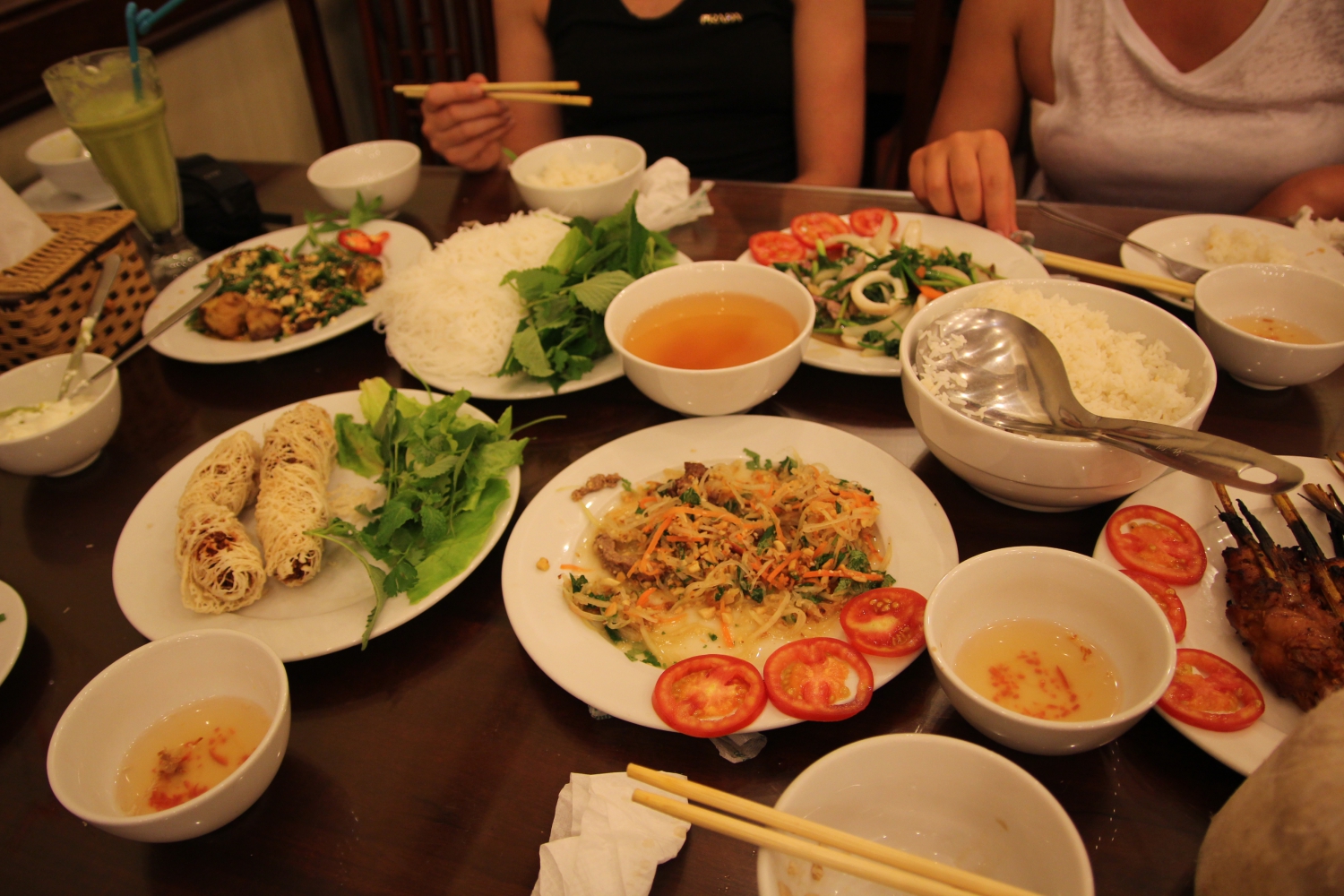
*Another rule of thumb: try to avoid consuming street side pre-peeled fruit/vegetables that appear to have been washed in contaminated water. If you want to sample the local produce, peel it yourself, and bring it home to wash it in treated water.
**Iâve heard the Vietnamese eat dog⦠is that true? Do I have to worry about being served this by accident??
In certain parts of Vietnam (and Asia), dog meat is consumed. You will never have dog meat âslippedâ into your meals, however, as itâs considered a specialty food⦠not a meat substitute. There are specific places that dog is served (Thit Cay signifies the sale of dog meat at a restaurant)⦠so if you donât like it, simply stay away from it!
Do your homework on the Traffic Patterns
Even if you donât plan to drive a motorbike, taking some time to learn the traffic patterns can be extremely helpful. For starters, Vietnamese drive on the right hand side of the road (opposite Britain, India, Thailand, etc.)
Drivers often indicate and slowly pull to the right side of the road when theyâre planning to turn left, and also merge slowly into oncoming traffic when trying to access the opposite lane.
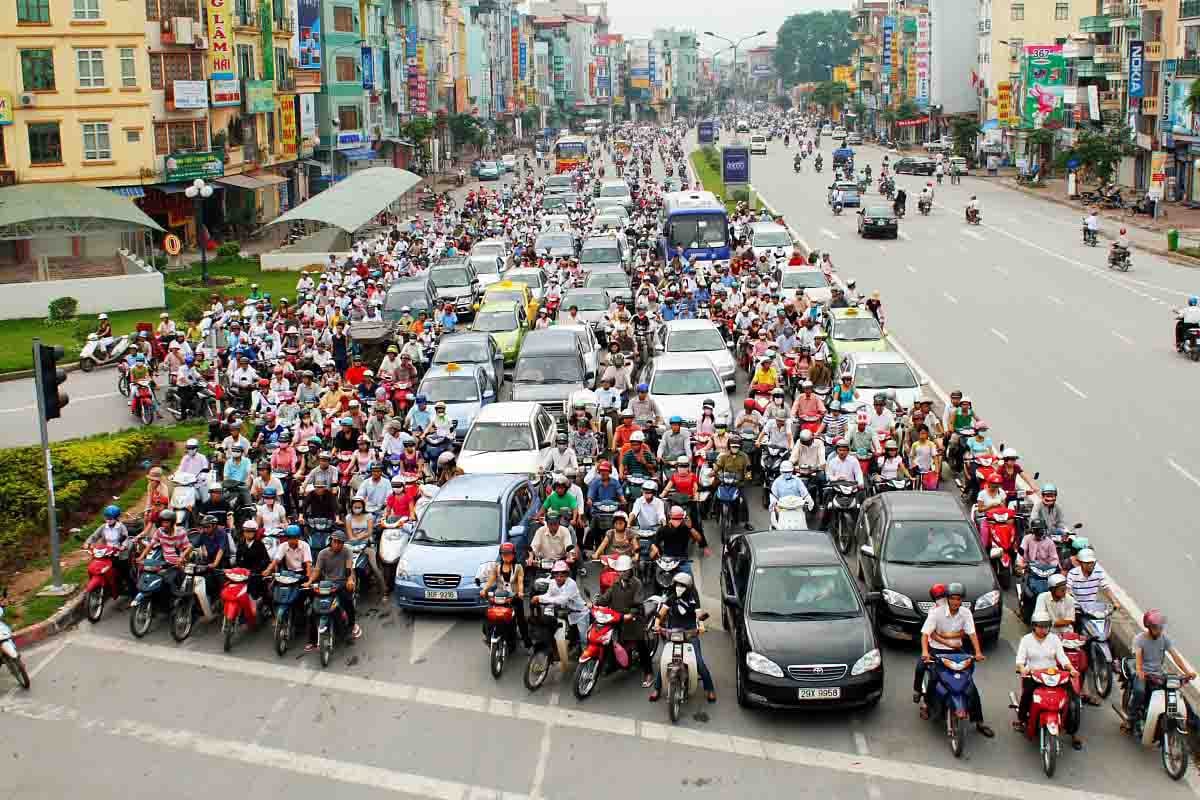
Speed limits do exist, traffic police will fine foreign drivers who donât drive with proper licensing (an international driverâs license), not wearing a helmet is a fineable offense (and just plain stupid), and driving under the influence of alcohol is simply out of the question.
Crosswalks seldom exist and/or are seldom observed (except in parts of HCMC and Hanoi), so when crossing the street, do so in a slow, fluid motion; donât stop short or try to run across the street. Allow the cars and motorbikes to slowly move around you as you walk across the street.
While it can be hectic to first observe the traffic laws in Vietnam, driving a motorbike can be one of the coolest experiences you can have. If you have the proper international licensing and feel comfortable driving in Vietnam⦠do drive a motorbikeâ it is unforgettable!
Do bargain at local shops⦠but bargain kindly
When it comes to making purchases in local markets and other places where prices are not clearly labeled, bargaining is a socially acceptable practice. It helps to do a bit of research into the actual costs of items (to get a basic idea, take a stroll through a mini mart or supermarket), but itâs expected that as a foreigner, youâre going to get quoted a higher price. The best place to start bargaining is at half of the asking price. Bargaining should meet somewhere in the middle between their asking price and your first proposed price. Be reasonable when bargaining, do so in a friendly manner, and donât let a bad shopping experience spoil your time!

Donât try to bargain in a shopping mall or covered shop with set prices, and donât bargain when sitting down to a meal at a restaurant. A menu with prices means the costs are set.
Go Off the Beaten Path
While this may not apply as much for first-time visitors, getting off the beaten tourist trail is one of the most enjoyable aspects of visiting Vietnam. Whether itâs cycling away from the tourist quarter into the countryside villages, motorbiking along the highways to lesser known regions, or hiring a guide to take you off the beaten trail⦠Vietnam has some incredible experiences to share and some of Asiaâs friendliest locals.
Keep your travel smarts about you at all times, of course⦠never stay out too late at night and donât go places by yourself that feel disconcerting.
Understand the Cultural Differences
While Vietnam is quite contemporary in some aspects, it still observes many traditional roots. When you enter someoneâs home, do take your shoes off at the door (where you see all the other shoes), and do let elders sit, speak, and eat first. Also, do try to use chopsticksâ itâs culturally appropriate and quite fun.
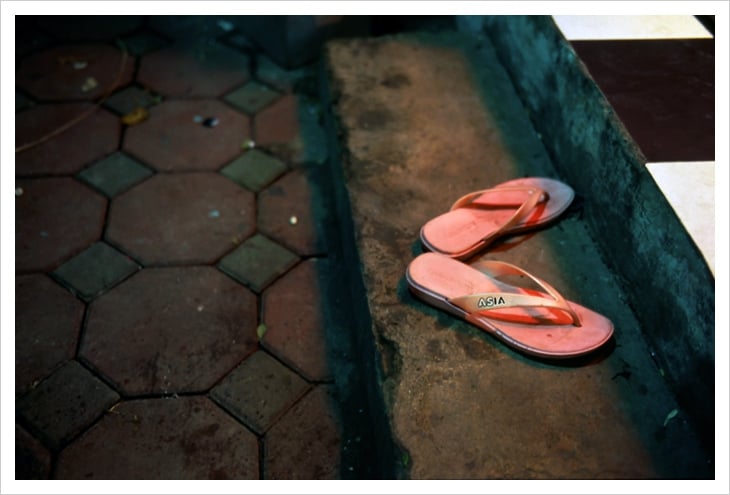
Donât touch the top of someone elseâs head (itâs considered a revered part of the body), donât stick your chopsticks directly into a bowl of rice (itâs a funerary practice), donât point the soles of your feet at someone or at the family altarâ itâs considered very rude.
Learn some Vietnamese!
While we arenât talking complete fluency, learning some key Vietnamese words and phrases can make a world of difference not only with your travels, but also with your local interactions. Many foreign tourists arrive and depart Vietnam without even learning the basic phrases of hello and goodbye. Even the simplest attempts at speaking Vietnamese will make faces light up and smiles come out⦠a very rewarding (though sometimes embarrassing) attempt.
Here are a few basics to get you started (with phonetics):
Hello: Xin chà o/ Sing Chow
How are you (basic): Khá»e không? / Kway Kahwm?
How much is it: Bao nhiêu tiá»n? / Bow Nyeew Tee-uhn?
What time is it: Mấy giá» rá»i? / My Yah Roy
1-10: má»t, hai, ba, bá»n, nÄm, sáu, bảy, tám, chin, mÆ°á»i /// mote, hi, bah, bone, nahm, sow, bye, tom (like the name), ching, moo-ee
Thank you: Cảm ơn / Come On
Excuse me/Iâm Sorry: Xin lá»i / Sin Loy
No: Không / Kahwm
Yes: Vâng / Vong
Coffee: Cà phê / café
Tea: Trà / chah
Water: NÆ°á»c / Nook
Beer: Bia / Bee-uh
Check (Bill) Please!: tÃnh tiÌen! / Tin Tee-uhn!
âââââ
â¦and the Donâts!!
Donât Wear Inappropriate Clothing
While short items and revealing outfits are socially acceptable in a few select parts of Vietnam (particularly in Ho Chi Minh City and Hanoi), the Vietnamese generally observe a more conservative dress. If youâre visiting a quiet beach town, itâs OK to wear your bathing suits or bikini on the beach. Donât, however, wear your small bikini or tight speedo bottoms into a restaurant, shopping area, or public space⦠itâs just not appropriate.
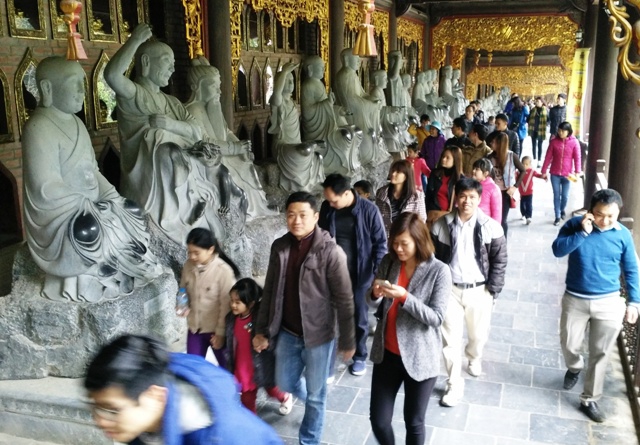
Additionally, you will not be permitted into religious places (i.e. temples, pagodas, churches, etc.) wearing shorts, short-sleeve shirts, or tank tops. If you plan to visit such places, wear light pants and bring a shawl to cover your arms and shoulders. (This goes for almost all countries in Southeast Asia.)
Donât Flash Expensive Items
While Vietnamâs crime rate is quite low, petty theft is not uncommon. If youâre walking down the street, make sure to keep cameras, phones, wallets, and other valuable items out of sight and close to your person. Pickpocketing and bag snatching is becoming more and more prevalent, particularly in big cities.
When youâre sitting at a restaurant, cafe, or public space, donât keep your bags or purse under the table/seat out of your sight. Whether itâs at your feet or attached to the chair, be sure to keep tabs on it, particularly if itâs containing valuables!
No matter where youâre staying (hostel or high end hotel), donât leave your valuables or passports laying around the room in plain sight. Use the in-room safe or tuck things away; even good people can do bad things if the opportunity arises!
Finally, donât bring your expensive jewelry on vacation. Unless thereâs extreme sentimental value that you simply canât part with, itâs better to just leave it/them at home.
Donât Use Your Camera Where itâs Not Appropriate
While taking photos is an integral part of going on vacation, there are some places in Vietnam where photography is not permitted. If youâre visiting local villages or minority areas of Vietnam, check first before you take photos. While some villages have no problem with it, others consider photography to be intrusive. Ask a well informed local before snapping away.
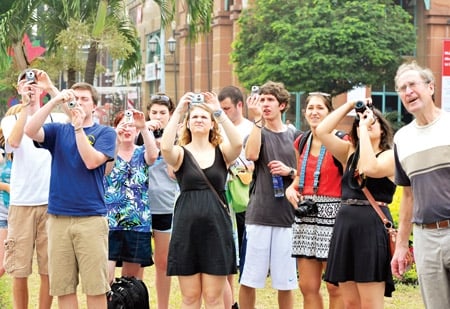
Donât take photos of military related things in Vietnam. Itâs considered a breach of national security and could end in your camera being confiscated, or worse!
Be aware when youâre visiting religious places⦠be mindful of no photography zones and obey accordingly.
PDA
Again, Vietnam is a rather conservative society. While you may see some people walking hand in hand, public displays of affection are generally avoided. That not only includes hugging and kissing between loved ones, but also how you greet Vietnamese. While westerners may hug or even cheek-kiss each other in a greeting, the Vietnamese tend to keep more distance. A hug to a new Vietnamese friend may be met with an awkward response.
Donât Drink the Tap Water
While itâs OK to shower and brush your teeth with tap water in Vietnam, itâs not OK to ingest it. No tap water is safe to drink. There are plenty of places where you can either buy bottled water, fill up water bottles with safely treated water, or even purchase 20 liter jugs of water for consumption.
â¦when youâre traveling Vietnam, do be sure to consume plenty of water every day. The heat and humidity may be overwhelming for some and can result in heat stroke or severe dehydration.
Donât Drink too Much (Alcohol)
While everyone loves to have a good time (and the Vietnamese definitely love to have a good time!), you still need to be aware of being in a foreign country. Many a tourist have ended up in a bad situation for drinking too much and staying out too late at night. If youâre planning a big night out, do be sure to stick with your group and get home at a reasonable time.
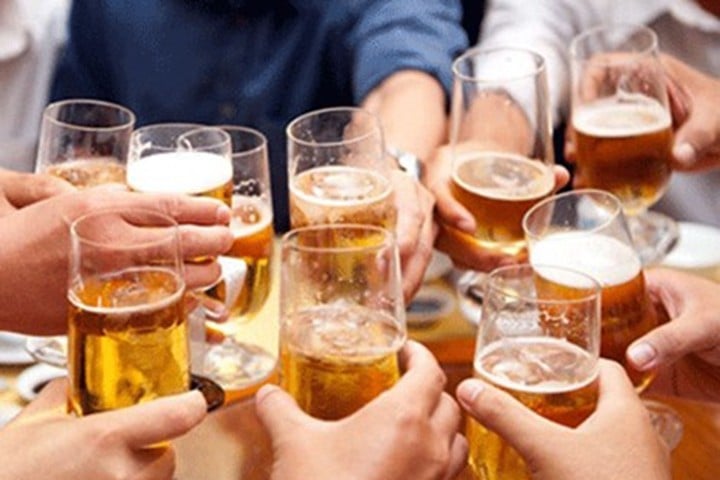
Conclusion:
While there may appear to be a lot of doâs and dontâs, Vietnam is a relatively laid-back destination with locals that are extremely helpful⦠and extremely forgiving. Try your best to appropriately integrate with the culture, and then deal with the awkward corrections afterwards- they always result in a good laugh or, even better, a funny travel story! Remember, youâre an ambassador of your home country visiting a foreign destination⦠whether or not youâd like to admit it, youâre representing where you come from!
Author: Daniel Robbins
Photos: Victor Guinea, Anhtu Nguyen, Denis De Mesmaeker,


